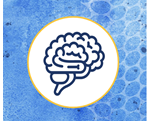Culture, Climate and Belonging Tip Sheet
A goal within CNHP is full participation in respective roles for students, faculty and professional staff through equivalent experiences while learning and working at the college. Therefore, it is CNHP's responsibility to create spaces where everyone feels safe to express themselves and their views and to make adaptations, accommodations or corrections where necessary. Academia is an environment to learn and grow without psychological or emotional harm or damage.
To that end, we created this tip sheet for faculty to assist in navigating check-ins, curriculum conversations and questions in the classroom toward the goal of a full academic participation.

GROUND RULES FOR CULTURALLY SENSITIVE CONVERSATIONS
Everyone's voice and what is shared are respected, confidential and honored. Use "I" statements and speak from your own experience to avoid generalizing and speaking for another group or individual. Resist the desire to interrupt, be honest and avoid critiquing others’ comments. Assume everyone has good intentions, but acknowledge when you say something, even if not intended, that is hurtful to someone else.

AUTOMATIC ASSOCIATIONS
The overarching achievement of structural and institutional changes comes from attention to health
equity and reduction of disparities in health outcomes. As health and service professionals who drive
this transformation, we should develop individual strategies for identifying and understanding our own
unconscious attitudes and the impact it, unintentional or otherwise, has on how we instruct in the delivery of care.
Hidden attitudes are not permanent. In fact, they are malleable, and steps can be taken to limit
their impact on our thoughts and behaviors (Dasgupta, 2013).

MODELING SKILLS
Being comfortable with discomfort creates conditions for learning both in the classroom and in the world. It is important to set the expectation that the entire class or independent conversations are predicated
upon active participation for conducting critical discourse and reflection. No one person needs to feel responsible for holding the space including faculty (Sokolava, 2016).

TONE POLICING
By silencing someone who is expressing their emotional truth about injustices, you are demonstrating that their pain and anger are not as important as your personal comfort. This tactic allows people without the same experiences to define what an acceptable and reasonable discussion or conversation about injustice is and it has real psychological consequences. It diminishes other's perspectives and disregards their lived experiences, sending the message that they are unimportant.

EVALUATION
It is up to all of us, faculty, students and professional staff alike, to systemically evaluate and review curriculum and our environments for disparities and to continually strive to improve class and work
performance resulting in closing the gaps in health disparity and inequity (Harbin, Thurber & Bandy, 2019).